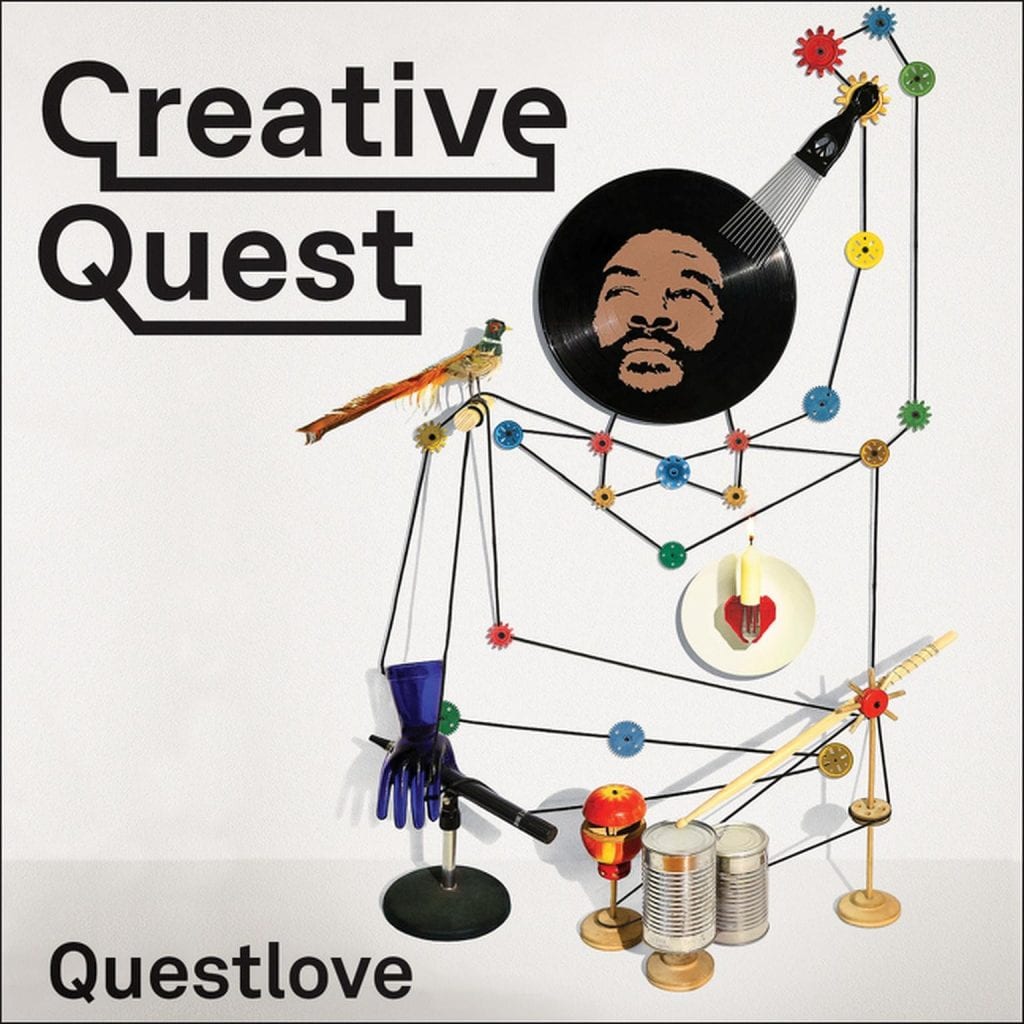Each year, I read a number of books that set out to define “what makes an artist,” or “how to be a better creative,” or “what creativity is.” Many of these books are inspiring yet standard. They repeat the same messages, tweaked just slightly. But Questlove’s Creative Quest breaks the mold, and it’s kept me thinking about how to grow as a creative.
Beautifully Building Better Creatives
While Creative Quest contains a number of original ideas that I have not seen in other “how to be a better creative” books (we’ll discuss those in a sec), its structure is its main strength. Questlove and his co-writer, Ben Greenman, weave personal anecdotes and creative theory together effortlessly, in a way that lesser writers would not be able to pull off. (Can you tell I’m jealous?)
Just when you think Questlove has wandered off his main topic, that he’s gone too far afield into a story that has no bearing on what he’s supposed to be talking about, he shows you how the story is the topic. And then, Questlove will pull that same story, idea, or snippet forward when talking about the next topic, and the next topic, and the topic after that. The book’s last pages are connected to its first in ways you would not expect, but make complete, intuitive sense.
The result is a book that’s less a straightforward “how to” guide than a tapestry of ideas about creativity. As a writer, I appreciate the work that went into creating this tapestry, making it beautiful, and also making it functional. Many books about creativity are beautiful. Many are functional (in that they teach you something useful about being creative). Not many are both.
Why Defining What You’re Not Is Important
So what new ideas did I glean from Creative Quest? Perhaps the most important was to define what I am not. Questlove calls this “negative affirmation” – making a list of all the things that you or your creative project are not, as a way of refining what they actually are.
As an example, at about the same time as I read Creative Quest, Sean asked all of us at Butler to define our roles and how we see ourselves growing as Butler scales up. As part of that exercise, I defined what I DO NOT want to see Butler become, especially as it relates to my position as Content Strategist/Copywriter. For example, I do not want to see us become a company that promotes cheap or spammy social media and email marketing tactics, without delivering quality content.
Nothing puts me off a brand faster than seeing them descend toward the “quantity over quality” end of content marketing. Your overall number of likes, follows, clicks, email opens, etc. means nothing if audiences don’t enjoy interacting with your brand (those high numbers will fall eventually). We’ve built our own brand organically, over time, by providing great content that our audience loves. And while we might spend some money to give that strategy a boost when we or our clients need it, our overall game plan holds true throughout.
So that’s something I’m not: I’m not a spammer, and I’m not a “hashtags first, content later” sort of content creator. That may end up becoming a failing for our agency (I really don’t think it will be, but it could). But at least that failing will be the result of a conscious decision I made.
There are many other things that I have decided I am not as a result of Creative Quest, all of which serve to remind me of what I am. I think this exercise, of defining the things you are not in service of determining what you are, is incredibly useful. And I’d encourage you to steal it and apply it to yourself or your business or your work.
Curation: The Key to Creativity?
Because I’m not as skilled a writer as Questlove and Ben Greenman, I can’t pull that Butler-centric aside back and weave it into my next point. But I can tell you that the second most important idea I took from Creative Quest was to think about how I curate the items that inform my creativity. The ideas, events, people, and other influences we encounter each day shape the creative outputs we produce, so it’s important to make sure each of those inputs are pulling their weight. In an ideal world, every idea you absorb would be worthwhile in some way.
But it’s also important to not over-curate, because new ideas and experiences inspire our most creative ideas. Striking the right balance between curation and openness is tough, especially in today’s overly-connected world. Questlove spends a chapter talking about this balance, and that’s the chapter of Creative Quest that I keep coming back to.
As a person who writes for both myself and for our clients, the ability to find my own path and remain open to others’ input and feedback is incredibly important. My curated collection of influences appears in all our clients’ copy, but my writing also has to serve each client’s individual needs and match their tone. That’s the most pressing curation-to-openness balance I have to strike, and I try to strike it perfectly each day.
There’s so much more to Creative Quest than what I’ve talked about here, and I’d love to tell you about Questlove’s thoughts on success, failure, managing the creative market, and mentorship. But this blog post needs to ship, and I have other creative work I need to get done. If any of what I wrote above struck a chord with you, I’d highly encourage you to pick up your own copy of Creative Quest, which you can do using the link below.



